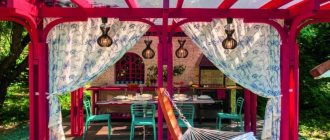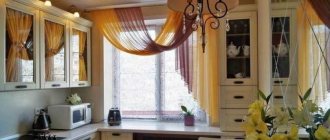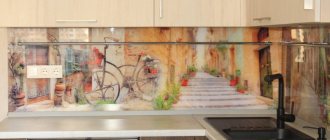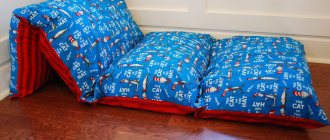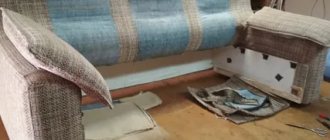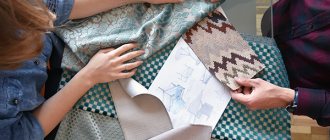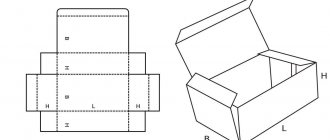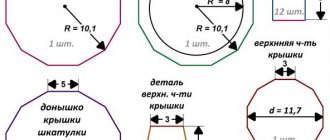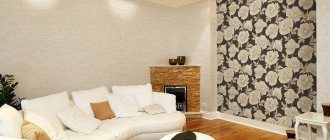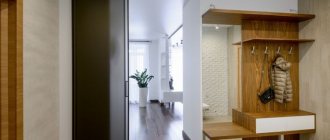Home » Decor
DecorInterior itemsDo it yourself
Alyona
23262 Views 1 comment
To realize the idea of decorating furniture, you will need little time, money, and most importantly, imagination.
Benefits of homemade pillows
If necessary, the craftsman has the opportunity to select an individual design, as well as use any fabric for the cover and decoration. In addition, the following advantages can be noted:
- A great hobby after a hard day.
- For girls, sewing is a good opportunity to practice basic sewing.
- When working on creating pillows, fine motor skills of the fingers develop well, and abstract and figurative thinking begins to form.
- Mothers and grandmothers can make baby pillows from natural materials with their own hands. Such accessories will allow your baby to maintain healthy sleep and good mood.
Thanks to the painstaking work of craftswomen, beautiful pillows (sofa, foot or floor models) will appear in the house.
The main stages of sewing a pillow
There are several steps to making a pillow with your own hands:
- Prepare all necessary tools and materials.
- Make a pattern.
- Sew all the pattern elements into a single product.
- Pillow filling.
- Final sewing of the pillow, installation of the zipper.
- Pillow decoration.
Ways to decorate decorative pillows
When creating a throw pillowcase, let your imagination run wild and explore all the decor you have. Many ideas have been invented for the manufacture of such products. Pillows are commonly used for:
- colored ribbons of various widths;
- yarn of different shades and textures;
- beads, beads, rhinestones, horns, sequins;
- cord;
- applications;
- embroidery;
- brushes, etc
How to sew a pillow: diagrams and instructions
Standard pillows
Standard patterns are the simplest ones that don’t even require a pattern. Essentially, these are two squares of fabric that are simply sewn together. Usually everything is done by eye, including the amount of filler.
The instructions look like this step by step:
- Two squares of the same size are drawn on the fabric. This can be done using a prepared paper template.
- All three sides need to be sewn together. You can do this with a sewing machine or a small needle and thread.
- A filler of arbitrary density is introduced inside.
- The side is stitched.
If you plan to often use the pillow for sleeping or relaxing, you can sew in a zipper. This allows you to quickly remove the pillowcase for washing.
For decoration, you should buy toy eyes and ears at a craft store. These pillows will appeal to preschool and younger children.
Pillow bolsters
Bolsters, unlike square pillows, require just one piece of fabric and two side panels. The easiest way to make them is not with purchased fabric, but with an existing blank. Old jeans work best. You will be comfortable in pants and jeans, since they already have the desired shape and you do not need to resort to a sewing machine. If you don’t have old pants, you can use regular canvas. Because the padding must be dense, the seams must be strong and durable.
To always have access to the padding, you can make a tie at the end of the bra and stuff it like a punching bag. The heads are used as armrests and headrests.
Knitted pillow
How to make a pillow entirely with your own hands? For those who like to knit, you can make your own pillowcase. All you need is very strong, high-quality thread and some free time.
The advantage of such a pillow is the possibility of decoration. You can make the pillowcase white and dye it with special yarn dyes. They are washable and do not fade in the sun.
Latex filler can be used as a filler. Unlike synthetic down, it will not fit through the wide pores of the dressing.
A knitted pillow can be decorated as you wish. Including, you can make beautiful children's pillows and headboards.
What to stuff the product with?
After manufacturing, decorative pillowcases are filled with a special filler. The following characteristics are important for the composition:
- elasticity, ensuring reliable fixation of the shape, absence of deformation, restoration of volume;
- breathability: fillers and fabric must be breathable;
- hypoallergenic - raw material filling should not cause allergic reactions;
- ease of care: the pillow can be quickly washed even in an automatic washing machine.
The following are used as fillers:
- down and feather;
- cotton;
- natural yarn;
- plant components (dried herbs, buckwheat husks, barley, mint leaves, lemon balm, thyme, hop cones, dried herbs);
- cotton wool;
- padding polyester;
- holofiber;
- silicone granules.
Synthetic insulation is inexpensive, soft, porous, lightweight. However, experts recommend periodically replacing this filler.
Hollofiber is a non-woven material consisting of interwoven polyester fibers. The raw material retains heat, is lightweight, easy to use, holds its shape, is breathable and does not absorb moisture. Shelf life up to 5 years, machine washable.
Cotton is environmentally friendly and hypoallergenic. It is characterized by increased hygroscopicity, retains heat, prevents the formation of fungus, is comfortable and lasts a long time.
Old knitwear is used to stuff pillows. You can cut out the stuffing of sweaters, sweaters, and pants. Products are washed, dried, cut.
Natural yarn: You can use wool or cotton based material.
Sweater pillow - cloud
A good idea for a DIY pillow is to sew an unwanted sweater. This decorative soft cloud pillow looks original and does not require any special skills or sewing skills. To create you will need: a sweater, a pattern, a pencil, sewing accessories, filler.
Draw a cloud on paper, cut it out, turn the sweater inside out, and use pins to stick on the cloud template. Trace the template over the fabric, taking into account a margin of about 6-8 mm, cut out 2 blanks.
Carefully sew the patterns, but leave about 10 cm unstitched. Turn the fabric inside out, stuff the pillow well with stuffing, and sew the rest with hidden seams.
At your discretion, you can use buttons and threads to make a cloud of eyes, nose and mouth.
Nuances you need to know
Before you start sewing a pillow, you need to stock up on all the necessary materials. For this kind of creativity, in addition to fabrics, it is worth preparing pieces of fur, leather or suede trim. Felt, fleece and felt can also be used in decoration.
When working on a pattern, keep in mind that placing filler will lead to a significant reduction in the size of the finished product. Therefore, it is recommended to add 3-4 cm on each side to the selected parameters. Also, don't forget about seam allowances.
There is nothing difficult about making a simple pillow configuration. You will need a rectangular piece of thick fabric measuring 128*63cm, you need to sew 3 sides completely and 1, not all. Then the workpiece must be turned over, filled with putty, and the area that remains unsewn must be sewn up by hand.
After acquiring the skills to create accessories for sofas with your own hands, you can move on to mastering the sewing of decorative covers. Its cutting is simple and quick, since its dimensions coincide with the manufactured pillows.
Selection of materials
Textiles for chair cushions should be selected taking into account maximum resistance to humidity, low or high temperatures, and direct sunlight. These factors are important, because seats can be used not only for home furniture, but also for garden furniture.
Textile
It is worth noting that not all materials are suitable for making a chair cushion with your own hands. The fabric for the future seat should be pleasant to the touch, wear-resistant and, most importantly, pleasing to the eye. Among the most popular options for sewing a cover for a stool with your own hands, there are several types:
- Linen. It can be used for a long time without changing its appearance. This material is relevant for kitchens made in Provence or country styles. Disadvantages: rough texture and difficult to iron.
- Cotton. This material is durable, hypoallergenic and inexpensive. Washable. The disadvantages include rapid wetness. Paints applied to fabric fade quickly in direct sunlight.
- Lycra. This material is elastic and stretches well in all directions. It is also highly resistant to external factors and washes well.
- Gabardine. This type of fabric can be called one of the most successful for sewing chair cushions with your own hands. It has an attractive appearance, is easy to clean, and dense.
LinenCottonLycraGabardine
There are various ways to decorate pillows that you can do yourself:
- Braid. Gives a finished look and looks impressive. To secure the braid, the edging is placed in the middle of the main seam line and basted.
- Cord. This decor fits perfectly into the classical, baroque, and empire style. Additionally, the product can be decorated with tassels. Best combined with velor, velvet, silk.
- Frill. To make the products look softer, you can buy a ready-made frill or make it yourself. In this case, select a contrasting color or to match the base material.
- Fringe. A short frame will make the seat beautiful and neat, while a long frame will not suit every interior.
Any decor is selected taking into account the characteristics of the furniture’s use.
Filler
Before sewing chair cushions, you need to choose a filling for them. With all the diversity, each of them has its own advantages and disadvantages. A distinction is made between natural and synthetic materials.
The most popular natural fillers:
- Feather and down are light raw materials, which require a large amount to make a soft seat.
- Sawdust – cedar and pine shavings are usually used. These fillers have a healing effect, for example, the aroma of pine needles helps with headaches. But sawdust wrinkles over time and needs to be changed periodically.
- Buckwheat - seats filled with this filler are very popular, as the seat turns out to be very convenient and comfortable.
- Sheep wool is soft, practical, pleasant to the touch.
- Horsehair has all the benefits of wool, but the seat is tough.
There is one advantage of natural materials - there are no toxic chemical additives. Disadvantages include short service life, possible allergic reactions, and are not suitable for outdoor furniture.
Feather, down Sawdust Buckwheat Sheep wool
Synthetic materials include:
- Expanded polystyrene is a filler that consists of small granules. Foamed, hard and light balls add volume to the pillow. This material has an orthopedic effect. Over time it becomes wrinkled and requires replacement.
- Polyurethane foam is a rigid filler that does not cause allergic reactions. The material can retain its shape for a long time.
- Polypropylene - elastic plastic balls recover almost immediately after sitting on the cushion. When ignited, the composition releases toxic substances.
- Foam rubber pillows are soft, lightweight, and have a long service life. The most commonly used brands are EL 2540, EL 2842, the thickness of the material is chosen within the range of 5-10 cm.
- Holofiber is light in weight and can be used in combination with other synthetic fillers. Does not cause allergic reactions, is resistant to moisture, does not absorb foreign odors.
- Sintepon - placed on top of the foam rubber, does not allow the facing material to stick or stretch, and evenly distributes the load. It is recommended to choose padding polyester with a density of 100 g/cm2.
All synthetic fillers quickly restore their original shape and do not cause allergies. Can be used for garden furniture.
Expanded polystyrene
Knitted
Once again I am convinced that knitting is a very useful skill. If you plan to knit or crochet for a long time, winter is the best time to start learning. And don't think this is an extremely difficult stitch, you can do it!
These are knitted If braids and cornrows don't look good on you, don't be mad. Take sectional yarn - the products turn out interesting, and it is better to knit it with stockinette stitch, which is what all beginners start with.
If you don’t know how to knit patterns, take sectional yarn. Still, from a practical point of view, I like crocheted covers better - they hold their shape better.
All this beauty is crocheted. Pillows crocheted with voluminous patterns look great. Despite the beautiful appearance, mastering the technique is not difficult!
Volumetric patterns are beautiful! Round pillows look very cozy and encourage sleep. The model on the right is my favorite from this collection. How sweet, gentle, elegant. Bravo to the author of the idea!
If you don't like angles And another very comfortable type of pillow is a bolster. If you don't have it yet, be sure to do it, you won't regret it.
Very comfortable cylindrical pillows
Preparing patterns
Today, on various Internet resources and practical sewing magazines, you can find a wide variety of sewing patterns for pillows of all sizes and shapes. But if desired, the master can independently think through the future design of the accessory.
In this case, the drawing must show the dimensions, main details of the future roof, the presence of auxiliary elements (inserts, modules).
Filler selection
The softness and weight of the pillow depends on the filler. Material options here could be:
- Cotton wool. Natural, inexpensive material. Its disadvantages are that it is heavy and quickly falls into clumps.
- Natural fluff will make objects light, delicate and soft. However, it is expensive and difficult to care for.
- Sintepon is a budget synthetic material. It has great softness and light weight. However, over time it clumps into clumps.
- Holofiber is a universal, artificial, modern filler. It's inexpensive and will last a long time.
- Foam rubber should be chosen for decorative elements or pillows with a certain shape.
- Silicone granules make the pillow pleasant to the touch. This model easily adapts to the shape of the human body, it is pleasant to wrinkle and squeeze.
- Comforel is a filler made of small balls. The properties are very similar to silicone granules. It is more pleasant to the touch than granules, but is more expensive.
- Buckwheat husk is a natural analogue of comforter or silicone granules. It's not cheap. However, this pillow is pleasant to use and easily relieves stress. In addition, buckwheat husk is one of the most environmentally friendly and hypoallergenic materials.
- Aromatic herbs create a pleasant atmosphere, fill the room with delicate aromas, relieve tension and spasms. These pillows are useful for people with back or joint pain. Herbs are an addition to any other filler.
There are many options for filling a pillow.
Master classes on creating creative pillows
DIY sofa accent pillows come in many variations and ideas. They are all completely unrealistic and not worth it.
After all, they are needed to create an overall holistic image in the room. And products of different shapes and technologies will not visually create scale at all. Let's look at some interesting ideas.
Materials for creating beautiful and artistic pillows can be found in every home, and you do not have to spend extra money on purchases in specialized fabric or accessory stores.
What we may need:
- pieces of fabric of different shapes and lengths;
- large sharp scissors;
- multi-colored threads of different densities;
- crayons or regular pencils;
- sewing needles (ideally a sewing machine);
- various accessories
Important! When combining different fabrics, watch their density. They must be compatible with each other. When cutting soft, loose fabrics, you should not make appliqués or zone the product; this will make your task more difficult.
DIY pillows for the sofa - master class No. 1
Two rectangles are cut out of soft fabric. They will be the base of the lid.
Also, by using sewing chalks vertically, we create clear lines, on average 2-2.5 centimeters apart.
From the same fabric we cut out our blanks in advance - thin strips measuring 1.5 by 10 centimeters.
The finished pieces are firmly laid along aligned lines and stitched by hand (preferably by machine).
The finished sewn fringe is folded to the side, pressed with hands or using an iron, and the second batch is sewn along the adjacent vertical line.
Sometimes craftswomen sew blanks in a checkerboard pattern to create a voluminous effect, but this requires more effort and time. You can fill the space of the pillow as much as you like until the result is visually pleasing to you.
After all work is completed, the back is carefully sewn to the finished front and filled from the inside with suitable material. Foam rubber or padding polyester is best.
Master class No. 2
This variation of an interesting and elegant product should be made exclusively from thick fabric. Felt is best for this, as it will not crumble when cut and will have a clear shape even in the smallest detail.
To implement this idea, you need to use three absolutely identical squares. Two of them will become the basis of the pillowcase, and the third will act as a direct decoration.
It should be cut along the entire required length into strips no more than 1-1.5 centimeters.
All ends are applied vertically to the base, practically touching each other. And they are sewn along a line somewhere 1 centimeter from the top edge of the cover.
Then each adjacent strip is intertwined and stitched again.
Such braids should be done all the way to the bottom, creating a visual grid. The side stripes should be constantly folded and pointed in the opposite direction for a clear image.
To ensure that all the lines are straight, you can first apply markings on the body using a ruler and auxiliary pencils or crayons.
The finished decoration is sewn upside down at the back and has high quality stitching along all edges. The inside is stuffed with padding polyester, and the remaining small hole is sewn up with an invisible hidden seam. Your lattice pillow is ready!
Upholstery reupholstery
Covering the module is not a labor-intensive process, but requires care. First, you need to take into account that you will need two covers for pillows: internal and external. One closes the module structure, giving it a complete look, the second performs a decorative function. The first cover is made of coarse textile, characterized by good strength and density. The second fabric should also be dense, but also beautiful, fitting into the interior.
To make the process easier, you can rip open the old cover and, if there is no zipper, add an allowance. Having ironed the material, it is measured so as not to buy excess fabric, then the required amount of material is purchased and cut out in compliance with the direction of the grain thread. You should not add allowances other than those that already exist: the fit of the textile should be as tight as possible: sliding of the textile or its sagging is unacceptable, as this will lead to the formation of folds and loss of attractive appearance.
If desired, the cover can consist of more than just textiles. Sometimes a layer of synthetic padding is added to it, connecting it to the upholstery with decorative stitches. Often the cover is decorated not only with stitching, but also with finishing piping or cord.
Choosing a pillow for a sofa is a topic that worries many people. Having a good foundation, you don’t want to throw away furniture just because the modules are worn out. Repairing pillows will change the style of the interior and extend the life of the sofa.
An example of self-upholstery of a sofa (restoration of soft parts, replacement of upholstery fabric and strengthening of the main furniture frame) is in the video.
Cushions on a sofa are an integral part of the interior. The combination of design colors speaks about the subtleties of taste of the owner of the house. And the shape characterizes the personal characteristics of the owner. Handmade rollers will fill your home with coziness and will certainly delight your guests.
Sofa cushions provide comfort and coziness and help place color accents in the interior
Pillow decoration options
The most difficult stage, but also the most creative moment, is decorating the accessory. Interesting ideas for seamstresses:
- Embroidery of the original ornament with thick threads on the front side of the cover. These can be a wide variety of shapes, lines, geometric patterns.
- Sew on an additional pillowcase with a zipper.
- Inserting multi-colored modules during the sewing process of the cover.
- Creating appliqués from felt or other material. This technique can only be used for sewing accent pillows.
In addition, the master has the opportunity to order a print on fabric with a photograph or a beautiful thematic canvas.
Buttons
Involve your children in the decorating process. All you need is the pillow itself, a little creativity, buttons and glue. Yes, you understood everything correctly.
We present to your attention a safe way to fasten parts. Activities with your child will strengthen the bond between you and create unique items for the rooms.
Decorative pillows for a children's room
Decorative pillows can be used to decorate a child's room. Handmade children's pillows can make a room cheerful, and the child will feel comfortable and cozy in it.
These can be pillows in the shape of fairy-tale characters, animals, or just a regular pillow, but a decorative pillowcase will be bright and cheerful.
Filling
Sewing a pillowcase with your own hands is half the battle, because you still need to fill it with something. All fillers are divided into two types:
- natural (animal and plant origin);
- artificial.
Animal origin
Down, feathers, wool are natural fillers. Among the advantages:
- sanitary and hygienic properties;
- long duration;
- they don't crust over.
Materials for decorative pillows are practically not used, because they are not matted like sleeping pillows.
Vegetable origin
Suitable fillers growing from the ground include:
- buckwheat husk;
- bamboo;
- medicinal herbs;
- hop cones.
The materials require special care because they can become wet, rot, or rot, which can have a detrimental effect on your health. What else can you fill with handmade sofa cushions?
Artificial
Cotton, pieces of worn items, padding polyester used to make outerwear - these materials are not suitable because they can get tangled and come off in clumps. Among modern materials, it is worth noting synthetic down and holofiber. In terms of hygienic properties, they are similar to swan's down, but will last much less - 7-10 years. Another advantage of fillers is elasticity, which remains virtually unchanged over the years.
For children's clothing, you need a hypoallergenic material - silicone granules are great because they do not get wet. It’s not difficult to stuff a sofa pillow with your own hands - you need to leave a gap of 2-4 cm and just pour the filler there. Silicone beads are easy to clean by simply washing them by hand with water.
The artificial filler can be washed in a washing machine - it will be free of dust and become suitable for further use.
DIY pillow photo
Sources
- https://vsepodelki.guru/podushka-svoimi-rukami/
- https://idd.expert/podushki-svoimi-rukami/
- https://dnevnikmastera.ru/podushki-svoimi-rukami
- https://mydizajn.ru/podushki-dlya-divana-svoimi-rukami-100-foto/
- https://mirpozitiva.ru/articles/2121-podushki-svoimi-rukami.html
- https://lafoy.ru/dekorativnye-podushki-svoimi-rukami-95-foto-86
- https://design-homes.ru/sdelaj-sam/divannye-podushki-svoimi-rukami
- https://7dach.ru/Samdolis/sebe-iv-podarok-ocharovatelnye-dekorativnye-podushki-svoimi-rukami-242584.html
- https://HouseChief.ru/dekorativnye-podushki-svoimi-rukami-foto.html
- https://gidrukodeliya.ru/originalnye-podushki-svoimi-rukami
- https://dekodiz.ru/svoimi-rukami/podushki-na-divan.html
- https://svoimirykamiinfo.ru/podushka-svoimi-rukami/
